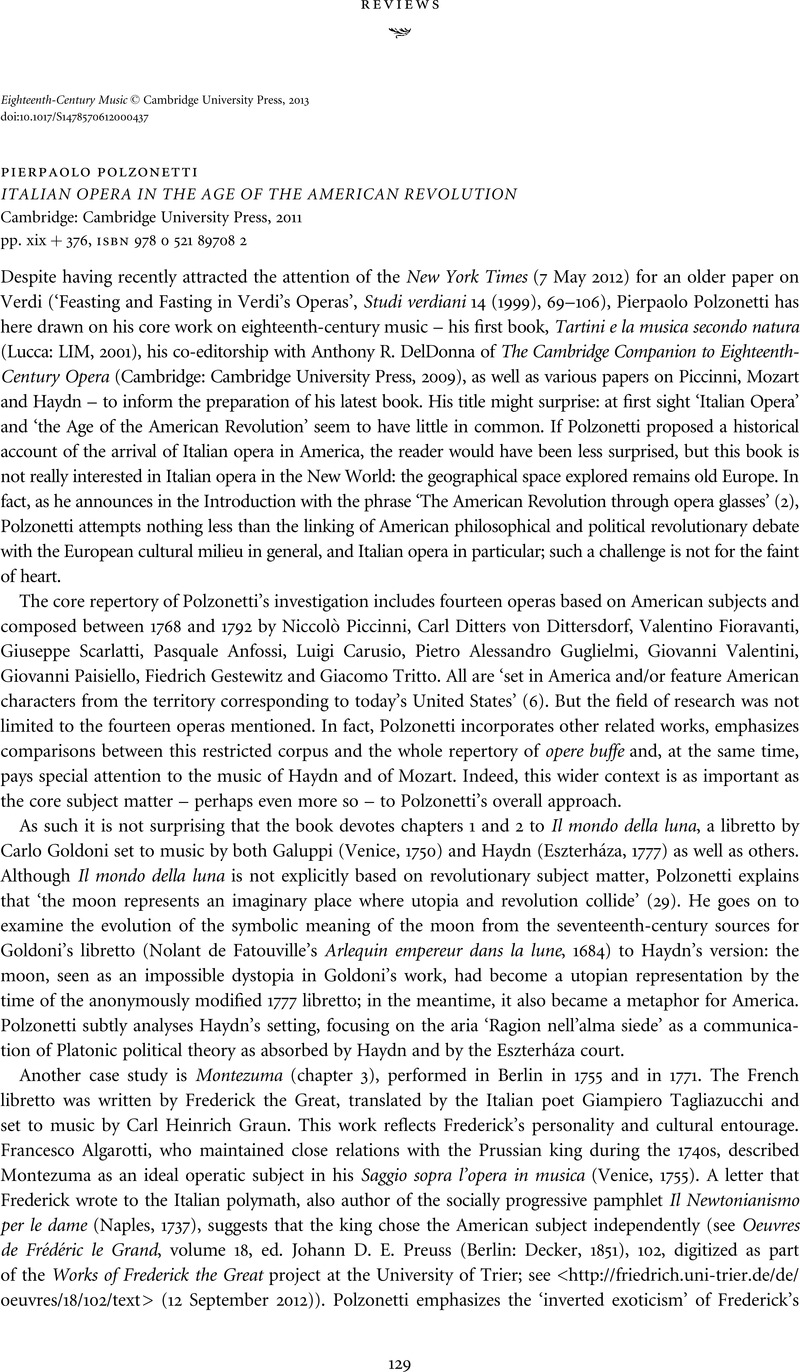No CrossRef data available.
Article contents
Pierpaolo Polzonetti ITALIAN OPERA IN THE AGE OF THE AMERICAN REVOLUTIONCambridge: Cambridge University Press, 2011pp. xix+376, isbn978 0 521 89708 2
Published online by Cambridge University Press: 06 February 2013
Abstract
An abstract is not available for this content so a preview has been provided. Please use the Get access link above for information on how to access this content.

- Type
- Reviews: Books
- Information
- Copyright
- Copyright © Cambridge University Press 2013




